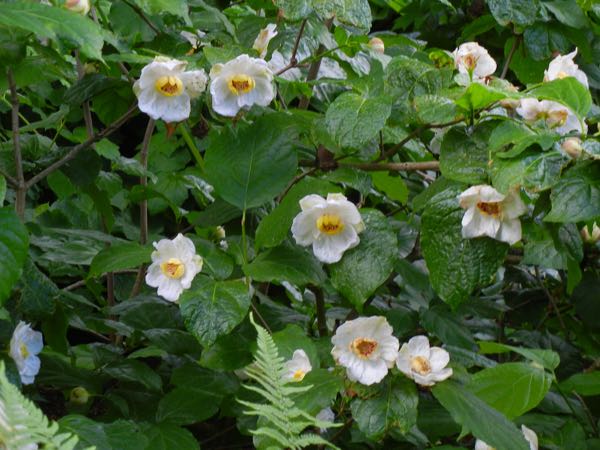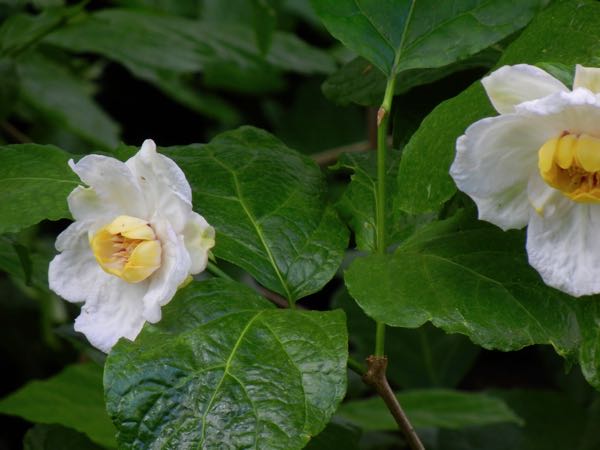Calycanthus chinensis: A Fragrant Beauty from Eastern China
Calycanthus chinensis, also known as Sinocalycanthus chinensis, is commonly referred to as Chinese Sweetshrub or Chinese Wax Shrub. It belongs to the Calycanthaceae family of plants. This captivating shrub is native to Eastern China.
Characteristics and Description
Calycanthus chinensis is a densely branched, deciduous shrub that can reach a height of 3 m or 10 ft. It features large, glossy green leaves that grow in an opposite arrangement. The leaves are elliptical to obovate in shape and transform into a vibrant yellow hue during the autumn season. The flowers of Calycanthus chinensis are cup-shaped, with overlapping petals and yellow centers. They showcase a pure white coloration. This shrub blooms during the summer months, adding a touch of elegance to the landscape.
Fragrance and Flowering Season
One of the most alluring qualities of Calycanthus chinensis is its delightful fragrance. The flowers emit a sweet and spicy aroma, reminiscent of strawberries or apples. This fragrance adds to the overall charm of the shrub. The flowering season occurs during summer when the shrub is adorned with its stunning white blooms.
Cultivation of Calycanthus chinensis:
Sunlight: Calycanthus chinensis thrives in full sun to partial shade. It is best to provide it with a location that receives ample sunlight, although it can tolerate some shade.
Watering: Regular watering is essential, particularly during the first year after planting. Once established, Chinese Sweetshrub becomes more drought-tolerant.
Soil: Plant Calycanthus chinensis in humus-rich, fertile, and moist soil. It is important to ensure good drainage to prevent waterlogging.
Pests and Diseases: Calycanthus chinensis is generally resistant to pests and diseases. However, it may occasionally face issues such as aphids, scale, or powdery mildew. These problems can be addressed by using insecticidal soap or neem oil.
Propagation
Calycanthus chinensis can be propagated through various methods, including seed propagation, division, or cuttings:
- Seed Propagation: Sow the seeds in the fall, either in a cold frame or directly in the garden during spring.
- Division: Dig up the plant in the autumn after it has finished blooming. Separate the roots and replant them in a new location.
- Cuttings: Take 4-6 inch cuttings during the summer. Remove the lower leaves and dip the cut ends in the rooting hormone. Plant the cuttings in a well-draining potting mix, keeping them consistently moist. The cuttings should develop roots in 4-6 weeks.
Pruning While Calycanthus chinensis does not require frequent pruning, you can shape the plant or remove any dead, diseased, or damaged branches during the spring season.
Winter Care Calycanthus chinensis is hardy in USDA hardiness zones 5 to 9. In colder climates, it may benefit from being covered with mulch to provide protection from cold temperatures.
With its captivating fragrance, exquisite flowers, and easy maintenance, Calycanthus chinensis is a remarkable addition to gardens and landscapes. Enjoy the beauty and aroma of this Chinese Sweetshrub as it enchants your outdoor space.


Also, read about Calycanthus ‘Aphrodite’



